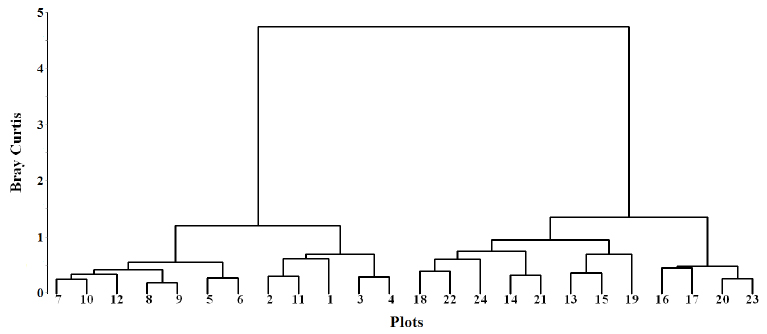Abstract
The Caatinga (dryland) vegetation of northeastern Brazil has become highly anthropized while still poorly studied, with little research evaluating its potential for natural regeneration. This study sought to compare the compositions and structures of the shrub-arboreal components of two Caatinga areas with different histories of anthropic disturbance in the Negreiros National Forest, Pernambuco State, Brazil. Twelve 4 × 50 m plots were established in each area, sampling all individuals ≥ 1 m tall with stem diameters at ground level ≥ 3 cm. A total of 34 species were sampled. The two areas had very distinct structures, with different dominant species: Croton blanchetianus, Poincianella pyramidalis, and Croton sp. in the conserved area; and Cnidoscolus quercifolius and Aspidosperma pyrifolium in the anthropogenically impacted area. The presence of cattle grazing appears to be negatively interfering with the recuperation of the anthropized area, which continues as a phytophysiognomically open site more than 30 years after discontinuing agricultural activities.
Keywords:
Negreiros National Forest; tropical dry forest; cattle; natural regeneration




